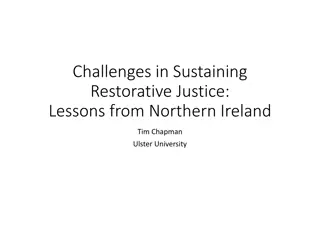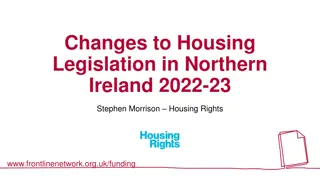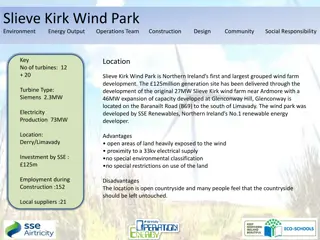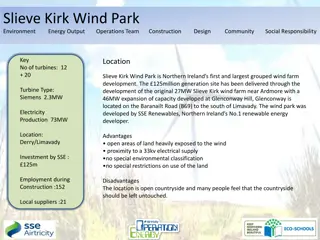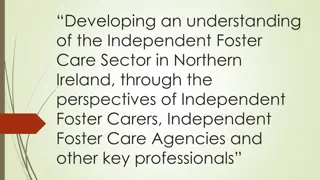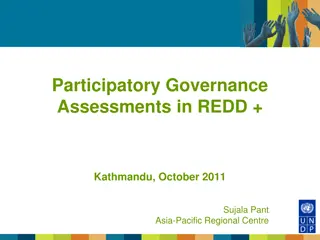Northern Ireland Governance Analysis
Examining the notion of Northern Ireland being over-governed through comparisons with Scotland and Wales. Assessing the public sector size, local government systems, quangos, and the Education and Skills Authority.
Download Presentation

Please find below an Image/Link to download the presentation.
The content on the website is provided AS IS for your information and personal use only. It may not be sold, licensed, or shared on other websites without obtaining consent from the author.If you encounter any issues during the download, it is possible that the publisher has removed the file from their server.
You are allowed to download the files provided on this website for personal or commercial use, subject to the condition that they are used lawfully. All files are the property of their respective owners.
The content on the website is provided AS IS for your information and personal use only. It may not be sold, licensed, or shared on other websites without obtaining consent from the author.
E N D
Presentation Transcript
Is the Idea that Northern Ireland is Over-Governed a Myth? Derek Birrell School of Criminology, Politics and Social Policy University of Ulster
Aims Examine the widely expressed view that Northern Ireland is over-governed and the public sector is very large Note that this presupposes a comparison with other countries or with a perceived standard or benchmark Examine evidence using comparison with Scotland and Wales and principles of public sector modernisation
Five Aspects Examined Local government Quangos / public bodies Government departments Assembly and MLAs Overall size of public sector
Local Government Systems Country Number of councils 26 Community councils - Average population 69,000 Workforce 2011/12 10,000 Northern Ireland 11 - 166,000 Scotland 32 [1,200] 163,000 274,000 Wales 22 [735] 140,000 174,000 England 434 [8,700] 139,000 2,120,000 Republic of Ireland 41 81 town councils 70,000 or 43,000
Results of Comparison Very limited functions Quite large populations No community / town tier Very small workforce Reforms will make little change No strong local government or super councils
Loss of Localism Increased public participation Local responsiveness Strengthening local communities Increase local accountability Efficiency gains
Quangos and Public Bodies Large sector in Northern Ireland Policy of reducing quangos Outcome maintains size of overall sector Establishment of centralised or very large quangos Examples of ESA and health and social care bodies
Education and Skills Authority Too large a population Delivering a very wide range of functions Compatibility with devolved central department Not responsive to local communities and needs Power rests with small number of appointed people Does not provide public and user participation Large unwieldy bureaucracy likely to be inefficient
Health and Social Care Boards Boards and Trusts are large in population comparative to GB Extensive range of functions covering; primary health, hospitals, adult social care, children s care Based on quango model of appointed boards Limits public and user participation Not responsive to local needs and communities Resulted in problems with planned commissioner /provider split Resulted in proposals for 17 integrated care partnerships Resulted in hospitals not having own management structure
Government Departments (1) Northern Ireland has 12 separate government departments Based on ministerial department model from Whitehall Problem not really number Reduction to 6/7 will not reduce functions of central administration and savings likely to be limited Question is whether system is compatible with working of devolution and joined up governance
Government Departments (2) Scotland has moved from departments to 31 Directorates Wales has a strongly integrated system if central administration Both do not always match ministers portfolios to administration units Question of political compatibility with 1998 Agreement and power-sharing arrangements
Size of Assembly Scotland has 129, Wales has 60 and Northern Ireland108 Justification for extra representation Necessary as part of 1998 arrangements to have wide representation of political views Scotland and Wales do not require as many representatives proportionately because of more major role of and powers of local councillors Note that Assembly could increase workload; other committees, more full inquiries and more scrutiny over quangos
Public Sector Employment Employed public sector 213,000 Percentage of all employed 27.7 Percentage of working age 18.4 Northern Ireland Scotland 581,000 23.5 17.3 Wales 333,000 25.6 18.5 England 4,600,000 19.6 11.2 UK 6,058,000 20.4 11.8 Source ONS [2012]
Conclusions Governance is not particularly large compared to Scotland and Wales Local government is small with few powers Major quangos are often too centralised and large Government departments functions must remain and number is not key issue Workforce is not excessively large Danger of reducing governance arrangements of being not appropriate for; devolution; modernisation of public sector; dealing with democratic deficits











